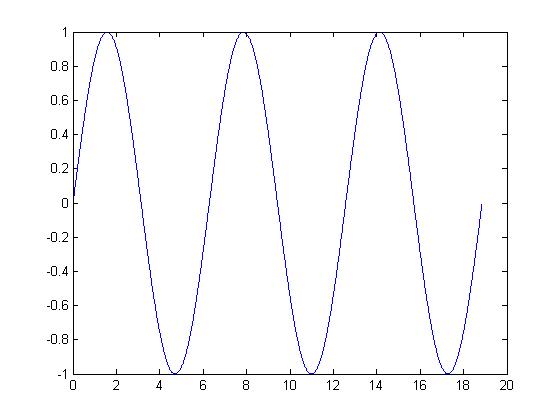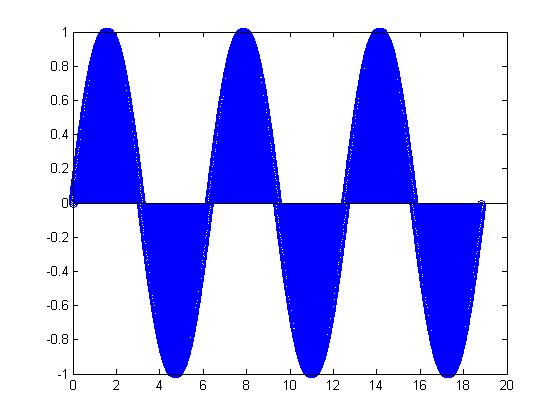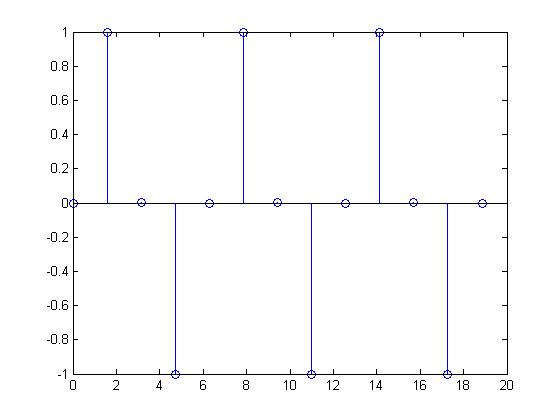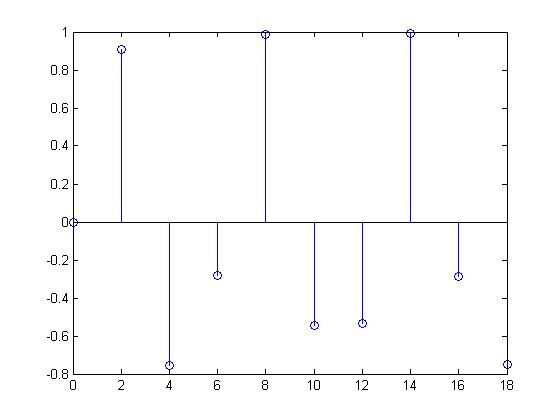(→Periodic Signal) |
|||
| Line 19: | Line 19: | ||
As can be seen from the graph, the values of x[n] are periodic because they repeat after every period of <math>t = 2\pi</math>. | As can be seen from the graph, the values of x[n] are periodic because they repeat after every period of <math>t = 2\pi</math>. | ||
| − | Therefore, <math>x[n + 2\pi] = x[n]</math> | + | Therefore, <math>x[n + 2\pi] = x[n]</math> |
| + | However, this still does not fulfill the requirement as <math>N = 2\pi</math> is not an integer. For the signal to become periodic, the CT waveform has to be modified to <math>x(t) = sin(2\pi t)</math> and sampled at a frequency of 1 Hz. | ||
==Non Periodic Signal== | ==Non Periodic Signal== | ||
Revision as of 09:17, 11 September 2008
Contents
1. Creating two DT signals (one periodic and one non-periodic) from a periodic CT signal
Let x(t) = sin (t), which is a periodic CT signal
Periodic Signal
This discrete time signal was produced from a CT sine wave by sampling at a frequency of $ \frac{1}{\pi} $.
As can be seen from the graph, the values of x[n] are periodic because they repeat after every period of $ t = 2\pi $.
Therefore, $ x[n + 2\pi] = x[n] $
However, this still does not fulfill the requirement as $ N = 2\pi $ is not an integer. For the signal to become periodic, the CT waveform has to be modified to $ x(t) = sin(2\pi t) $ and sampled at a frequency of 1 Hz.
Non Periodic Signal
For this discrete time signal which was produced by sampling the same sine wave at a frequency of 0.5, the values of x[n] are non-periodic because the discrete time signal is scattered all over the place with no indication of a pattern. Therefore, $ x[n + k] \neq x[n] $





